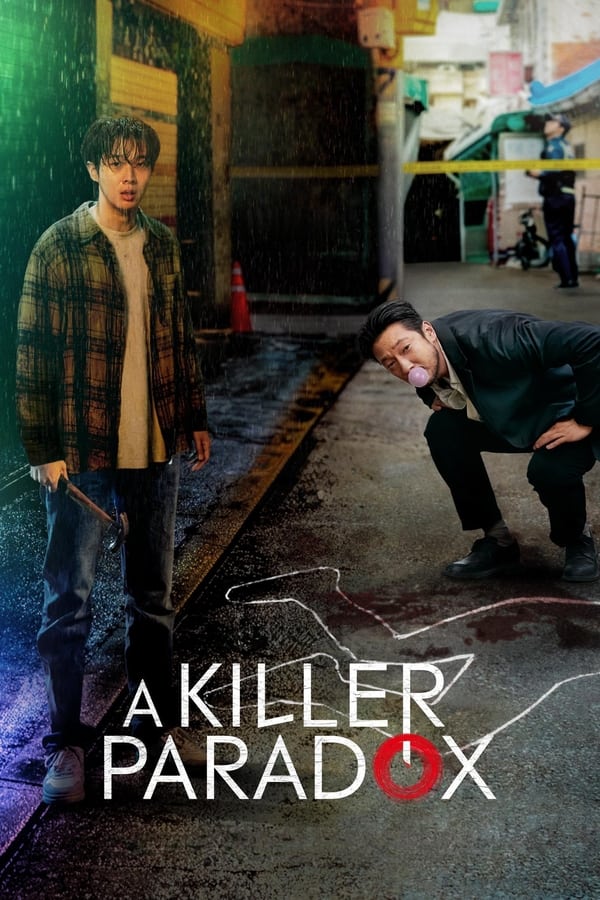A killer paradox
A Killer Paradox – A Riveting Thriller That Delves into Moral Ambiguity
In the tense and nerve-wracking thriller A Killer Paradox, an accidental killing spirals out of control, pulling an ordinary college student into a harrowing game of survival. Directed with precision and written with sharp attention to character development, the film explores the chilling consequences of a single moment gone wrong and the complex, often blurry, lines between guilt and innocence.
At the heart of A Killer Paradox is an average college student, seemingly plucked from everyday life, who finds himself thrust into an unimaginable nightmare. After one accidental killing, the story takes a harrowing turn as he becomes ensnared in a chain reaction of violence. Each decision he makes only tightens the noose around him, and with every step, he sinks deeper into a paradox of his own creation. To complicate matters, a shrewd detective is hot on his trail, adding a sense of urgency and danger to every scene.
The concept of accidental crime leading to more bloodshed is not new to the genre, but what sets A Killer Paradox apart is its psychological depth. The film doesn’t just depict the physical consequences of the protagonist’s actions; it delves into his internal struggle, guilt, and desperation as he tries to maintain a facade of normalcy while staying one step ahead of the law. This tightrope walk between morality and survival keeps the audience guessing until the very end.
The protagonist, played by a relative newcomer, captures the essence of a man out of his depth. His portrayal of a college student—who transforms from innocent and naïve to someone hardened by circumstance—is nuanced and compelling. His internal conflict is evident in his body language and expressions, which adds layers to his character. His fear and guilt feel palpable, making his descent into a darker, more complex individual all the more believable.
Equally impressive is the actor who portrays the detective. The shrewdness and intelligence of this character are immediately evident, but there is also a sense of relentlessness and determination that makes the chase a thrilling cat-and-mouse game. The chemistry between these two characters—though they rarely share the screen directly—is electric. The subtle ways in which the detective slowly closes in on the student add a palpable sense of dread, leaving the viewer anxiously awaiting the inevitable showdown.
The direction in A Killer Paradox is deliberate and effective. From the outset, the film grips its audience with a steady build-up of tension, never allowing a moment of comfort. The way the camera lingers on the protagonist’s increasing paranoia, the carefully chosen shots that emphasize his isolation, and the eerie silences that precede moments of action all work together to create a sense of inescapable dread.
The pacing is equally noteworthy. The film doesn’t rush through its plot, but instead lets moments of quiet reflection sit uneasily with the viewer, allowing the tension to simmer before boiling over. This slow burn approach works in the film’s favor, especially as the protagonist’s situation worsens with each wrong decision.
What truly elevates A Killer Paradox beyond a typical crime thriller is its exploration of moral ambiguity. The film asks difficult questions about guilt, responsibility, and justice. At its core, it’s not just a story about an accidental killer on the run—it’s about how easily an average person can be pulled into a web of deception and violence. The protagonist’s journey from a law-abiding student to someone capable of further killings is both tragic and horrifying, illustrating how quickly one can become ensnared by their own actions.
The film also deftly explores the relationship between the hunter and the hunted. The detective, while clearly the antagonist from the student’s perspective, is portrayed as a complex individual. His relentless pursuit is not just driven by duty, but by his own moral code. In this sense, the film raises questions about justice—is the detective a hero for trying to catch a killer, or is he simply another cog in a flawed system of punishment and crime?
Visually, A Killer Paradox is striking. The cinematography captures the cold and isolating atmosphere of the college town in which the protagonist lives. There’s an emphasis on shadows, dark alleyways, and oppressive architecture, which serves as a metaphor for the protagonist’s growing sense of entrapment. Each scene is meticulously framed to heighten the viewer’s anxiety, with the camera often focusing on the smallest details that could unravel the protagonist’s carefully constructed lies.
The film’s use of lighting and color is also notable. The contrast between the bright, almost sterile college setting and the darker, grittier world of crime and deception creates a visual representation of the protagonist’s internal conflict. As the film progresses, the color palette becomes increasingly muted, reflecting the character’s loss of innocence and the grim reality of his situation.
A Killer Paradox is a gripping, atmospheric thriller that stands out for its intelligent writing, strong performances, and psychological depth. It’s a film that not only delivers on suspense but also leaves the audience questioning the moral complexities of its characters. The exploration of how a single wrong choice can spiral out of control—and the way in which an ordinary individual can become both a victim and a perpetrator—makes this a haunting and thought-provoking cinematic experience.
For fans of crime thrillers that dig deeper than surface-level action, A Killer Paradox is an absolute must-watch. It’s a chilling reminder that, in a world where right and wrong are not always clear-cut, even the most well-meaning people can find themselves on the wrong side of the law.

